Protect the future of soilless organics
The National Organic Standards Board (NOSB) will vote November 2nd on a prospective rule change that would remove hydroponic, aquaponic, and other soilless or container-based growing systems from the USDA organic label.
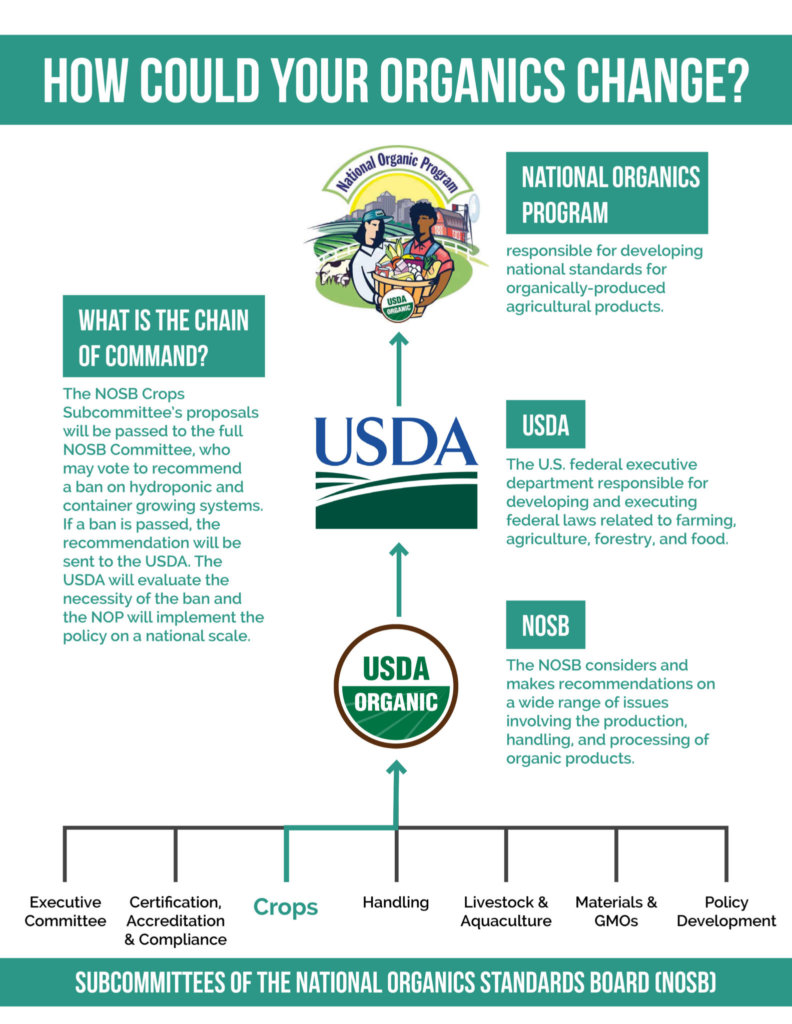
This article is part of series in our ongoing coverage about on the NOSB vote. Here’s what we’ve covered so far and what’s to come on the Upstart U blog:
- Top concerns voiced by the NOSB in their live meeting last month.
- How public comments help protect soilless systems’ future
- Why soilless growers and traditional organic growers are on the same side.
- What happens if soilless systems are banned + NOSB Crops Subcommittee Proposal update? – Today’s Post
- What happens if soilless growers are given access?
- A personal appeal from a certified-organic, soilless grower who will be directly impacted by this vote.
If you’re new to the issue, check out our earlier articles covering the major issues of the vote and recommending action. Today, we’re going to talk about the consequences of a soilless organic ban.
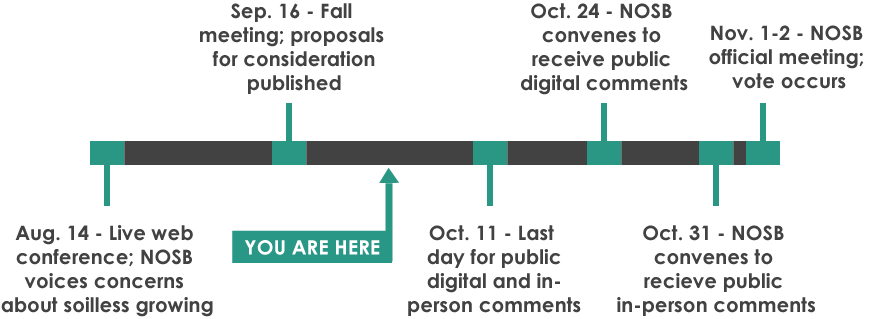
Crops subcommittee votes for ban
On September 16th, the NOSB Crops Subcommittee published a proposal that would ban hydroponic, aquaponic, and other soilless or container-based growing systems if accepted. The Crops Subcommittee voted to advance this proposal to the broader NOSB, who will vote on the ban November 2. The soilless organic ban was boiled down to four separate votes on different aspects of the proposed ban.
Each of these proposals will be covered and voted upon separately at the Fall 2017 NOSB meeting:
Aeroponics ban proposal – (8 for – 1 abstain)
“The Crops Subcommittee is opposed to allowing aeroponic production systems to be certified organic because they do not meet the requirements of Organic Food Production Act or the Organic Rule.” This proposal would ban any system that is “A variation of hydroponic plant production in which plant roots are suspended in air and misted with nutrient solution.”
Aquaponics ban proposal – (7 for – 2 against)
“The Crops Subcommittee is opposed to allowing aquaponic production systems to be certified organic at this time. If aquaculture standards are issued in the future, and concerns about food safety are resolved, aquaponics could be reconsidered.” This proposal would ban any system that is “ A recirculating hydroponic plant production system in which plants are grown in nutrients originating from aquatic animal waste water, which may include the use of bacteria to improve availability of these nutrients to the plants. The plants improve the water quality by using the nutrients, and the water is then recirculated back to the aquatic animals.”
(Hydroponic) Container growing proposal – (6 for – 3 against)
This proposal bans container based systems except for those than add no more than 20% of nitrogen feed after planting and limit the plants’ added nitrogen to 50% after the crop has been planted. This proposal would allow “Any vessel and associated equipment used to house growing media and the complete root structure of terrestrial plants and to prevent the roots from contacting the soil or surface beneath the vessel, such as, but not limited to, pots, troughs, plastic bags, floor mats, etc.”
(Hydroponic) Container growing ban proposal – (6 for – 3 against)
This proposal bans container based systems that add more than 20% of nitrogen feed after planting and fail to limit the plants’ added nitrogen to 50% after the crop has been planted This proposal would ban most soilfree systems from the organic label and severely limit the inputs any aqua-, aero-, or hydroponic system that otherwise met the definition of organic.
These proposals aim to block soil-free and low-soil systems from the organic label, while creating allowances for a small number of large-scale commercial farms. These bans not only prevent a future on the organic label for soilfree systems, but they fail to live up to the spirit of the organic movement’s values.
What these proposals mean for soilless and low-soil growers
The Crops Subcommittee proposals set the stage for a possible ban of soil-free systems. The possibility of these recommendations passing is very real.
Soilless and low-soil growers should speak up to ensure their voice is heard. Without demonstrating that soilless and low-soil growers are opposed to this ban, the members of the NOSB that are defending these growing practices will have little ability to sway their colleagues.
Minority opposition within the NOSB
Thankfully, the Crops Subcommittee document also highlights that there is an active minority on the NOSB that is fighting for the rights of soilless growers and for a diversity of growing practices. These are members of the NOSB who understand that soilless growers and traditional organic growers are on the same side – that unified, the organic label will be even stronger.
The consequences of a ban vote are dire
Should a ban of soilless systems pass, the consequences are numerous and clear. They include:
- Less organic food for consumers looking to improve their diets & lifestyles.
- No soilless systems on the organic label.
- Current organic-soilless farmers losing their certification.
- Less incentive to fund soilless-based research and academic work.
- Soilless systems will pursue alternative branding methods, devaluing organic label.
Today, we’re going to explore the consequences of a ban vote, and explain how you can help prevent such a ban from passing!
Consumers pay the price
To the consumer, the organic label is both a far cry and close match to the ideals and goals shared by the forerunners of the organic movement. The organic movement started as a rejection of the dangers of mechanized agriculture by farmers, academics, and scientists, focusing on sustaining the soil and world beyond the produce itself. The consumer ideal of the organic label matches this spirit – the ideal that the crops and produce purchased under the label are contributing to a better, healthier world, with sustainably grown, safe crops.
The reality of the ~$50 billions dollar organic industry often fails to live up to the expectations of the consumer. There is much confusion over the veracity of the organic label’s promise to consumers. In many ways, the organic movement could never truly match the demand the ideal created, with over 82% of households purchasing organic produce on a regular basis. Simply to meet demand, corners have been cut, promises broken, and customers are left unsatisfied.

Avel Chuklanov
Thankfully, soilless systems are here to help the organic label along. Soilless organics not only live up to consumer expectations, but can help spread affordable, healthy, and local produce all around the globe!
De-certifying soilless farmers is unfair and contradictory
Farmers like Ron Mitchell, of Local Greens, have already been certified organic. Passing a ban on soilless organics would remove Mr. Mitchell’s organic label and all the work that he’s put into achieving the rigorous standard. While this means quite a bit to Local Greens, many on the NOSB Crops Subcommittee don’t feel the same way:
Some have expressed concern that if hydroponic and aquaponic production are prohibited from organic certification, it would be a hardship for those hydroponic and aquaponic operations currently certified. Certainly, some currently certified operations would lose certification, but the numbers would be quite small relative to the total number of operations certified through the NOP. – NOSB Fall 2017 Crops Subcommittee Proposal
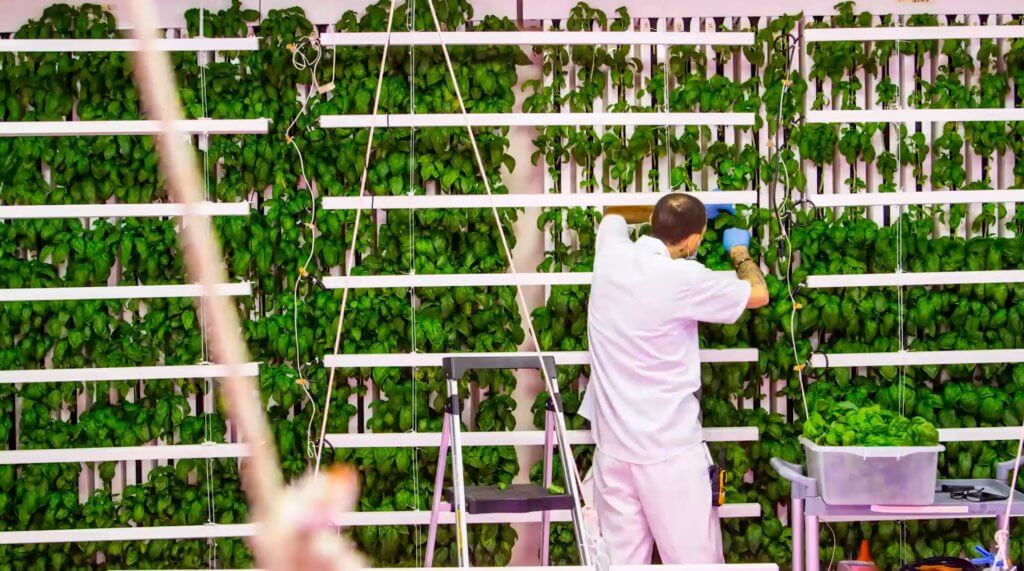
A Local Greens farmer prunes basil plants in the vertical farm.
Soilless growers of all sizes will pursue alternative branding methods
If forced from the organic label, soilless growers will find alternative methods of articulating the fresh, healthy, and local values inherent in soilless systems.
Like it or not, soilless systems are here to stay. While traditional organic growers see soilless growing as a threat to the values of the the organic label, they should be more concerned about what will happen if the soilless growers need to create a competing label that articulates the same values in a transparent manner.
Earlier we discussed consumer confusion and distrust surrounding the organic label. As awareness, funding, and support spreads for soilless systems, more and more folks will look for local alternatives to the organic label. Nothing is more local than traditional and soilless farms just down the block.
If there are concerns surrounding microbial levels, soil integration, and sustainability, then soilless growers will argue for further study or regulation that integrates soilless systems in a fair and productive manner. We challenge proponents of the soilless organic ban to consider a organic label in which all growers, soilless and soil-based, can work together to achieve the same goals.
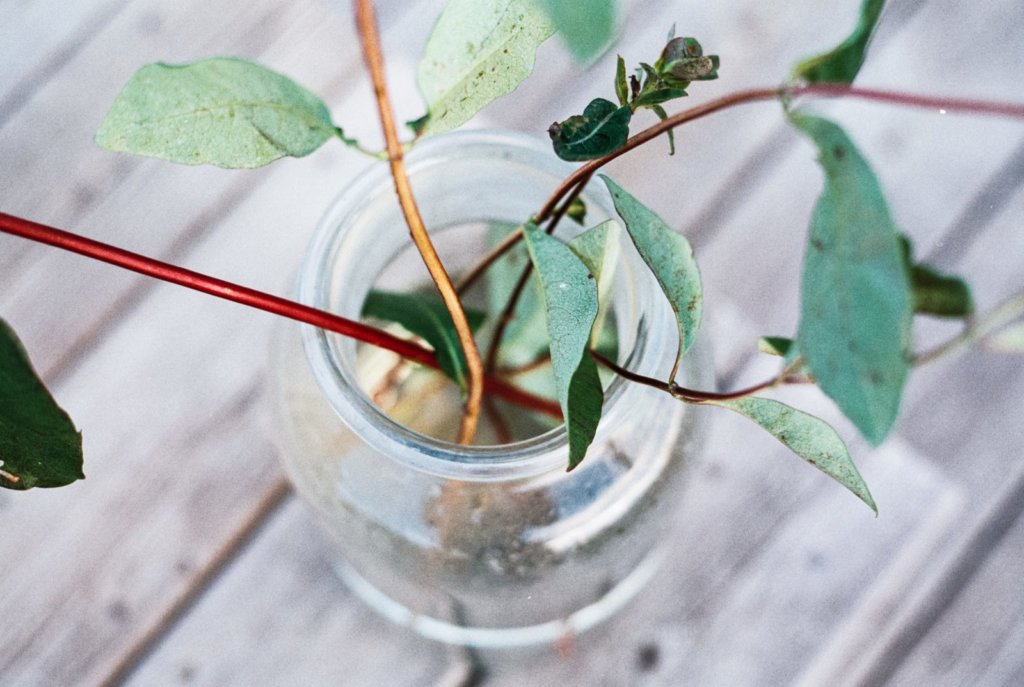
Photo credit: Jens Johnsson
Unnecessary consequences
The consequences of a soilless organic ban to consumers, soilless growers, and traditional organic farmers are not necessary. Growers on both sides of the debate agree on so much: the need for sustainability; protecting existing ecosystems and preserving soil; safety in food production; and fresh, local flavor.
Traditional organic growers must ask themselves: is this ban necessary?
The comment period for the NOSB’s recommendations to the USDA are now closed. To view comments, click here.

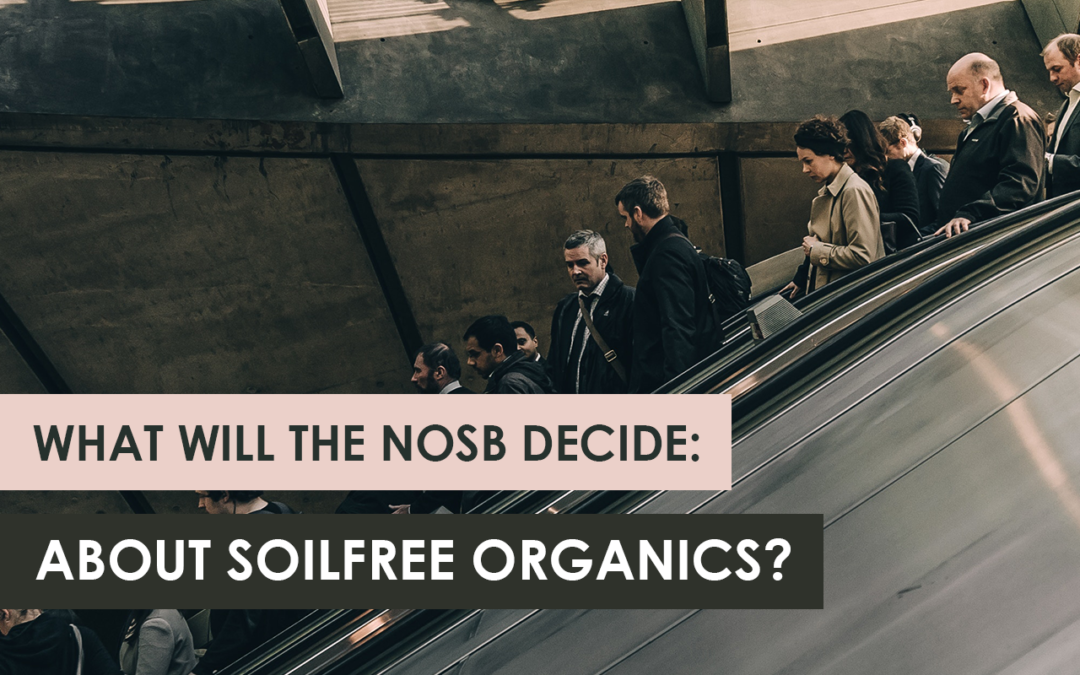

These comments are from a Rice University PhD Physicist who has worked for many years in the R&D end of the oil exploration business (measuring trace and major elements downhole) and who in his old age is starting a hydroponic small business vertical garden setup, and who anticipated having an organic label on his end final product. As is well known, there are 92 naturally occurring elements that can and often, and often do occur, in rocks and soils (soil being ground up rocks initially). Thus all 92 elements can occur in regular soils used for growing purposes whereas in hydroponics one can start with a set number of known elements. As a user of the end product, I would much rather eat vegetables grown in a material of known elements rather than in natural soil. Too many elements such as cadmium are scattered around in soils.